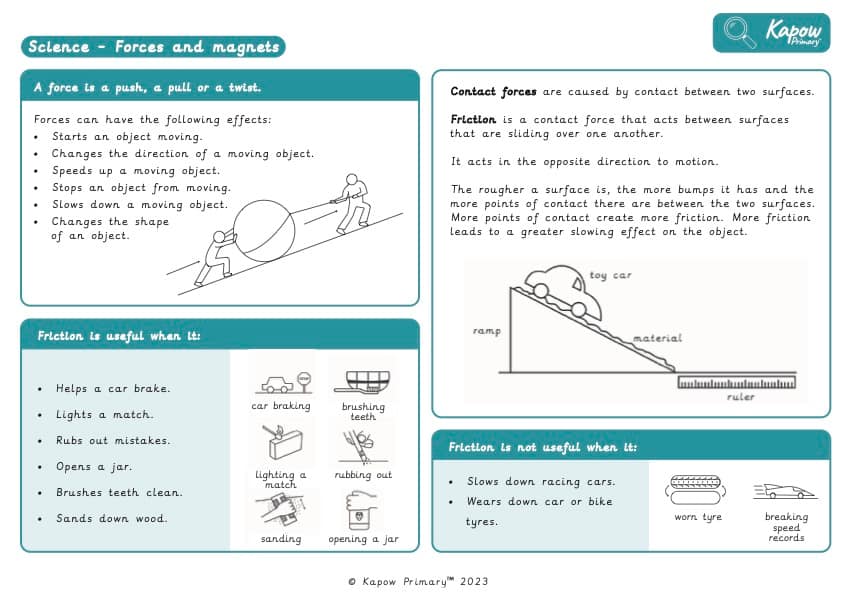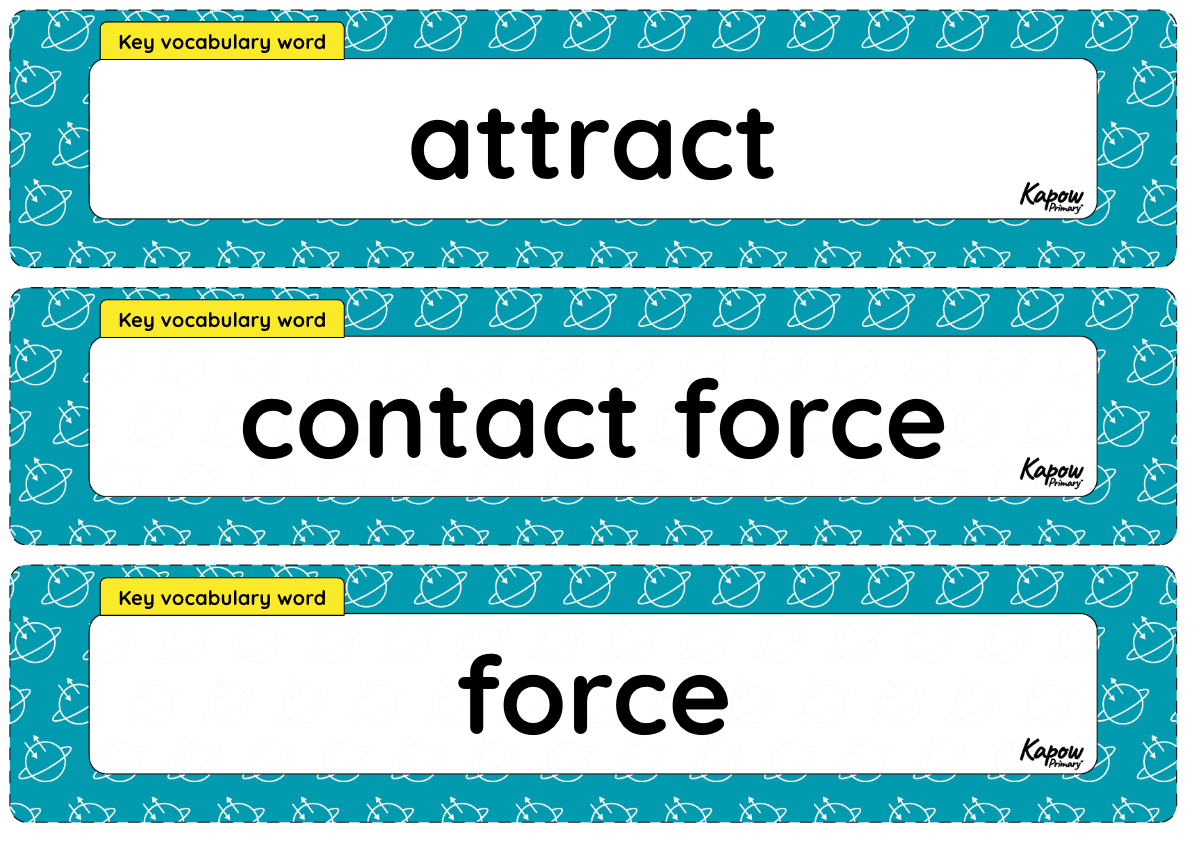Forces and magnets
Exploring contact and non-contact forces, including friction and magnetism and their effects.
- Subjects >
- Science >
- Lower key stage 2 >
- Year 3 >
-
Forces and space: Forces and magnets
Unit outcomes
Pupils who are secure will be able to:
- Identify examples of pushes, pulls and twists.
- Define a force, including describing, naming and classifying contact and non-contact forces.
- Describe the relationship between friction and the roughness of a surface.
- Identify examples of friction being useful or not.
- Predict attraction and repulsion between like and opposite poles.
- Identify examples of magnetic and non-magnetic materials.
- Name some examples of types of magnets and compare their strengths.
- Describe some examples of the uses of magnets.
When working scientifically, pupils who are secure will be able to:
- Use arrows and scientific vocabulary to show the direction of a contact force.
- Use evidence to support conclusions.
- Identify the variables to change, measure and control.
- Write a method to explain how to use a magnet to sort and classify materials as magnetic or non-magnetic.
- Label the axes of a bar chart.
- Draw bars on a chart accurately.
- Identify key information from a source.
- Use more than one source to research a question.
Please note that Kapow Primary Science lessons are designed to be 1 hour and 30 minutes long to reflect the requirements of a core subject.
Suggested prior learning
There are no previous units on forces, however the unit does build on some knowledge covered in the Year 2 unit 'Uses of everyday materials'.Lessons
Lesson 1: Pushes, pulls and twists
Knowledge
- To describe the effects of contact forces.
Working scientifically
- To label a diagram using arrows and scientific vocabulary.
Lesson 2: Friction
Knowledge
- To recognise the effects and uses of forces.
Working scientifically
- To write a scientific conclusion identifying cause and effect.
Lesson 3: Investigating friction
Knowledge
- To interpret how and why things move differently on different surfaces.
Working scientifically
- To plan an investigation using variables.
Lesson 4: Magnets
Knowledge
- To describe the effects of magnets.
Working scientifically
- To write a method.
Lesson 5: Investigating magnet strength
Knowledge
- To compare the properties of different types of magnets.
Working scientifically
- To display data using a bar chart.
Lesson 6: Uses of magnets
Knowledge
- To explain the uses of magnets.
Working scientifically
- To research the uses of magnets.
Key skills
Key knowledge
Related content
Unit resources

Knowledge organiser – Science Y3: Forces and magnets
Aimed at pupils, two pages providing key facts and definitions from the unit ‘Forces and magnets’.

Vocabulary display – Science Y3: Forces and magnets
A display version of the key vocabulary from the Forces and magnets unit.
Cross-curricular opportunities
English:
- Writing, non-fiction writing.
Maths:
- Measurement, measuring length.
- Statistics, drawing bar charts.
British values:
- Mutual respect.

